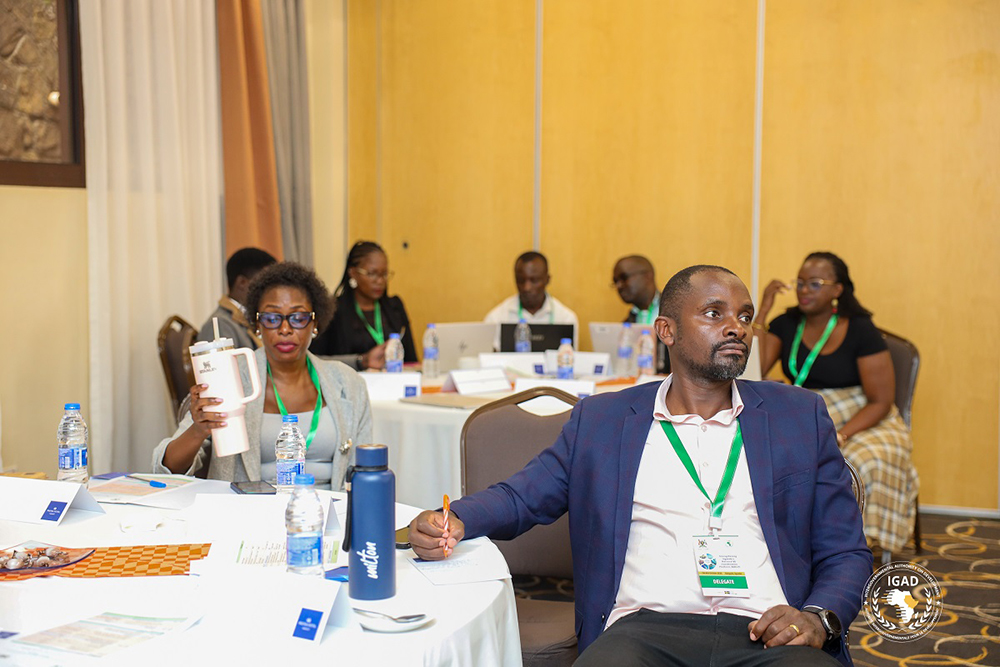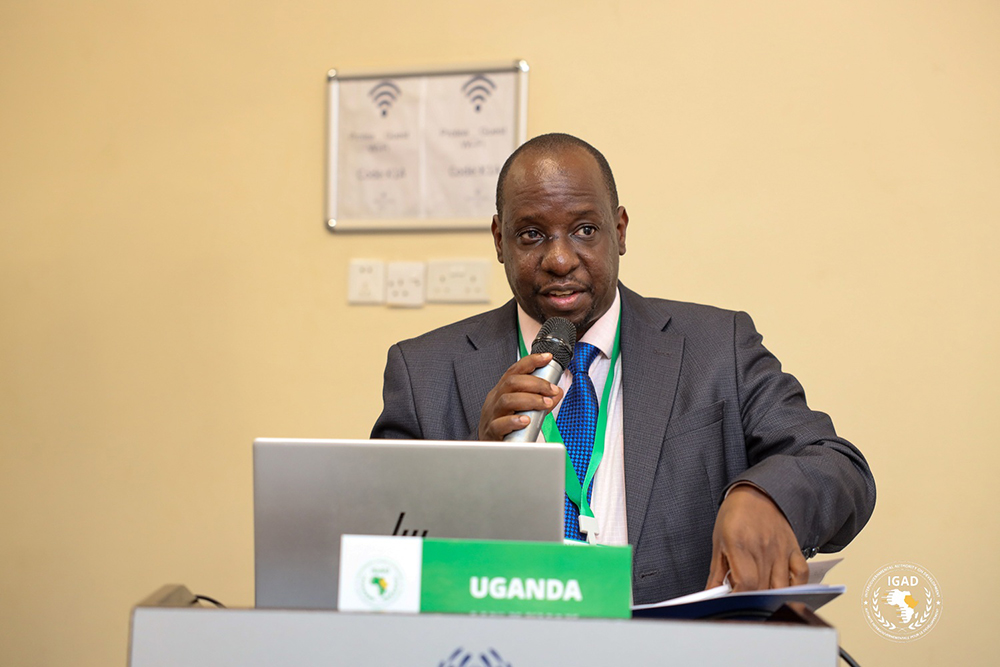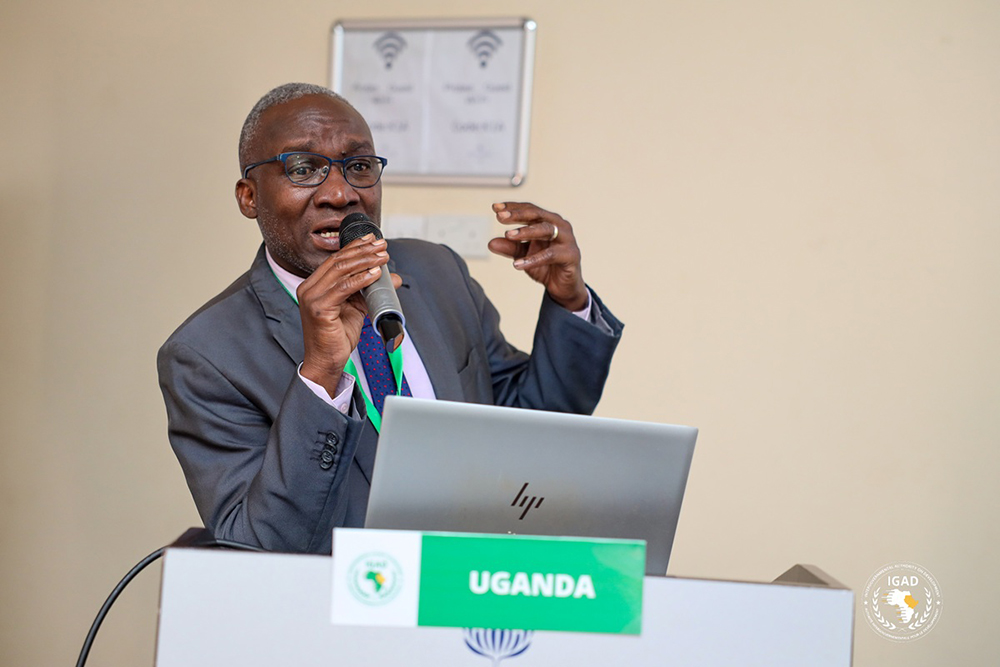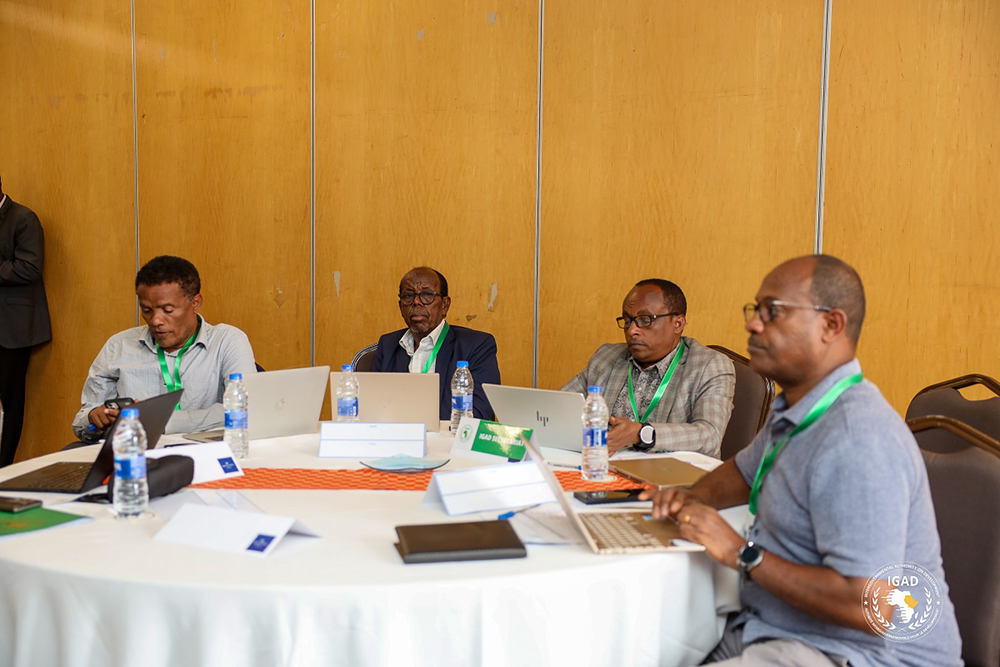IGAD decries growing plastic pollution of Lake Victoria
According to Dr Wassie Anteneh, a senior blue economy and fisheries expert in the IGAD agriculture and environment division, the growing challenge demands an effective plastic pollution prevention strategy at the regional and national level.
Oswan (left), Anteneh (standing, fifth-left), Orijabo (standing, seventh-left), the IGAD National Meeting for the Blue Economy Technical Committee, focusing ordination Platform at Protea Hotel in Kampala. Ainomugisha (standing, fifth-right) with other participants during CAN on strengthening Uganda's National Blue Economy Co on Tuesday, IGAD has called for action over the growing pollution of Lake Victoria. (Courtesy photo)
By Nelson Kiva and Steven Denis Matege
Journalists @New Vision
The Intergovernmental Authority on Development (IGAD) has called for action over the growing plastic pollution of Lake Victoria, among other water bodies in the region.
Lake Victoria, the largest lake in Africa, is of great importance to the ecosystem and the population living around it in the three countries of Kenya, Uganda and Tanzania, providing water for both domestic and industrial use.
According to Dr Wassie Anteneh, a senior blue economy and fisheries expert in the IGAD agriculture and environment division, the growing challenge demands an effective plastic pollution prevention strategy at the regional and national level.
Pollution affects the lake’s biodiversity, water quality and the availability of fish.
“These plastics where are they going after single-use? Obviously, they go to the watershed. We are not reprocessing as such. How can we avoid these plastics being dumped into Lake Victoria and other water bodies?" Anteneh said.
Anteneh raised the concern during the IGAD national meeting for the Blue Economy (BE) Technical Committee, focusing on strengthening Uganda’s National BE Co-ordination Platform (NBECP) at Protea Hotel in Kampala on Tuesday (October 7, 2025).
“Plastic pollution is killing the entire ecosystem, we can say, the water bodies we have. So, we need to implement a plastic pollution prevention strategy,” Anteneh said.
He added, “The plastic pollution prevention strategy will strongly encourage a circular economy. We strongly encourage a source-to-sea management system.”
He indicated that IGAD has already developed a regional plastic pollution prevention strategy and that IGAD was preparing a ministerial meeting in November to endorse politically the IGAD plastic pollution prevention strategy.
“So, I 'm sure the Ministry of Environment or the regulatory body for waste will attend, or the minister and technical people will attend that validation workshop. Very unfortunately, the global binding treaty by the United Nations Environment Programme (UNEP) failed last time,” he said.

Solomon Kasasira
He equally advocated for strengthened protection of the marine areas, highlighting that apart from Kenya, there is no effective marine protected area management system in other regional countries.
Efforts to clean up the lake
There have been several attempts to clean up the lake of plastic, through projects, including the Greater Kampala Plastic Recycling Partnership, accompanied by the GIZ-Natural Resources Stewardship Programme (NatuReS), supporting the Kampala Lake Victoria Clean-up & Circular Economy (KVCC) Project.
The overall objective of the partnership was to improve the sustainable management of plastic waste in Greater Kampala through developing an inclusive green recycling sector.
The KVCC project contributed to both removing litter from two heavily polluted bays, namely Murchison and Nakiwogo Bays in Lake Victoria, as well as tributaries such as the Nakivubo channel in the urban area of Kampala.
However, it is worth noting that it is not only Uganda that pollutes Lake Victoria, which covers over 26,000 square miles. Tonnes of plastic bottles, plus invasive aquatic weeds from Burundi, Rwanda, and Tanzania are discharged in the lake through River Kagera, which stretches about 400km from its source in Burundi before draining into the lake via Uganda.

Albert Orijabo
Co-ordination call
IGAD, through Blue-Economy knowledge manager and learning expert Simon Oswan, said a co-ordinated approach is key to implementing the BE strategy in Uganda and the IGAD member states.
Eng. Albert Orijabo, the assistant commissioner water resources planning and regulation department at Uganda’s water and environment ministry, also emphasised the need for collaboration among different ministries, departments and agencies to achieve the goals of the blue economy strategy.
"It's about reinforcing existing collaborative mechanisms,” he remarked while emphasising that some state and non-state programmes do not cater to the interests of other programmes, highlighting the need for a more integrated approach.
He noted that Uganda has embraced blue economy thematic areas aligned with regional and continental and economic groups’ aspirations.
The areas, according to Orijabo, include fisheries, aquaculture, maritime transport, shipping, ecosystem, sustainable energy and extractive minerals.
Orijabo noted that there is high political will and endorsement from heads of state and ministers to implement the blue economy strategy, as he emphasised the importance of incorporating cross-cutting issues like climate change, gender, and livelihoods into the strategy.
“The blue economy strategy is important for mobilising resources to implement regional projects and protect shared ecosystems,” he said.
He emphasised the importance of marine spatial planning to ensure sustainable use of water resources and minimise conflicts between different sectors.

The overall objective of the partnership was to improve the sustainable management of plastic waste in Greater Kampala through developing an inclusive green recycling sector.
Ronald Kaggwa, the manager production trade and tourism planning at the National Planning Authority, said among the initiatives being undertaken by the Government to boost the blue economy include the construction of ferries to improve cross-border trade.
“The private sector is increasingly participating in water transport. We also in the Nation Development Plan (NDP) IV talk about strengthening safety regulations. We also plan to upgrade transport infrastructure around Lake Victoria, Kyoga, Albert and River Nile,” he said.
He added, “We also want to develop water infrastructure to facilitate connectivity across Lake Victoria through Kisumu to Mombasa to Mwanza to Dar es Salaam. You've heard of the Northern Corridor and the Central Corridor. The central corridor, which goes through Mwanza to Dar es Salaam, Tanga Port, is not yet developed. We are relying more on the northern corridor. And NDP IV wants to have this.”
He, however, noted that Uganda's economy is vulnerable to climate change impacts and variability, among others, emphasising the need for investment in secondary and tertiary fish processing to add value to Uganda's fish exports.
The National Environmental Management Authority (NEMA) underlined interventions being undertaken to address illegalities threatening Uganda’s eco-setup.
“We have since mounted operations against wetland degradation, such as illegal sand mining in Lwera wetland, restoration of Lubigi and Nakiyanja wetlands. This has led to regeneration of the swamps whose ecological function had since been altered,” Anita Ainomugisha, senior environment assessment officer at NEMA, said.
Ainomugisha indicated that the authority is also undertaking impact assessment for major projects in sensitive waterside and aquatic areas such as the Kingfisher Project located on the shores of Lake Albert, Isimba Hydro Power Plant on River Nile in Kamuli district.
“All this ensures development (oil/gas, infrastructure) near or on blue economy zones with consideration of environmental risks and applied mitigation measures,” she said.
She said that NEMA has also established a research and innovation unit that has developed a five‑year research agenda (2024/25‑2028/29) covering key areas, including ecosystems and biodiversity.
“This unit is charged with providing data, science and evidence for policy and management, including aquatic ecosystem health, pollution among others,” she said.
